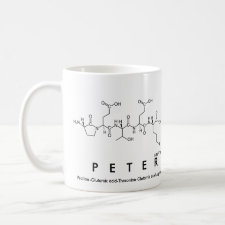
Authors: Spégel P, Schweitz L, Nilsson S
Article Title: Selectivity toward multiple predetermined targets in nanoparticle capillary electrochromatography.
Publication date: 2003
Journal: Analytical Chemistry
Volume: 75
Issue: (23)
Page numbers: 6608-6613.
DOI: 10.1021/ac034732w
Abstract: Two unique methods to achieve selectivity toward multiple predetermined targets employing molecular imprinting technology have been developed. Partial filling capillary electrochromatography (CEC) was utilized to evaluate and compare the two techniques. The first approach, the mixed singly templated molecularly imprinted polymer (MIP) nanoparticle approach, is based on the mixing of two types of MIP nanoparticles with inherently different selectivity. The second approach, the multiply templated MIP nanoparticle approach, is based on the incorporation of two different templates during the preparation of the MIP nanoparticles. The use of MIPs in analytical chemistry applications has been extensively investigated during the past years. However, MIP nanoparticles with tailored multiple selectivity toward predetermined enantiomers has not yet been explored. The relative amounts of the two templates studied, i.e., (S)- ropivacaine and (S)-propranolol, were found to strongly affect the affinity of the multiply templated MIP nanoparticles for the predetermined targets. The amount of (S)-propranolol template had to be decreased to concentrations rarely applied in MIP synthesis in order to achieve 2-fold selectivity. Even though strongly decreased to 10% of the usual concentration employed, the MIP could efficiently separate the enantiomers of propranolol when applied in partial filling CEC. This opens up for new possibilities to decrease the need for an initial high amount of template in order to be able to produce an efficient MIP. The multiple enantiomer separation ability of the multiply templated MIP nanoparticles was compared with that of singly templated MIP nanoparticles that were mixed prior to analysis. It was concluded that the multiply templated MIP potentially can offer many new and interesting applications in chromatography as well as in sensor technology and solid-phase extraction



Join the Society for Molecular Imprinting

New items RSS feed
Sign-up for e-mail updates:
Choose between receiving an occasional newsletter or more frequent e-mail alerts.
Click here to go to the sign-up page.
Is your name elemental or peptidic? Enter your name and find out by clicking either of the buttons below!
Other products you may like:
 MIPdatabase
MIPdatabase









